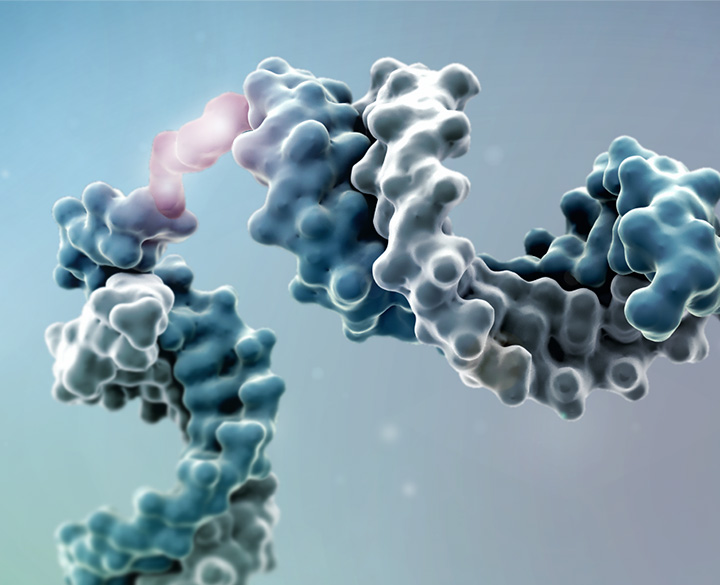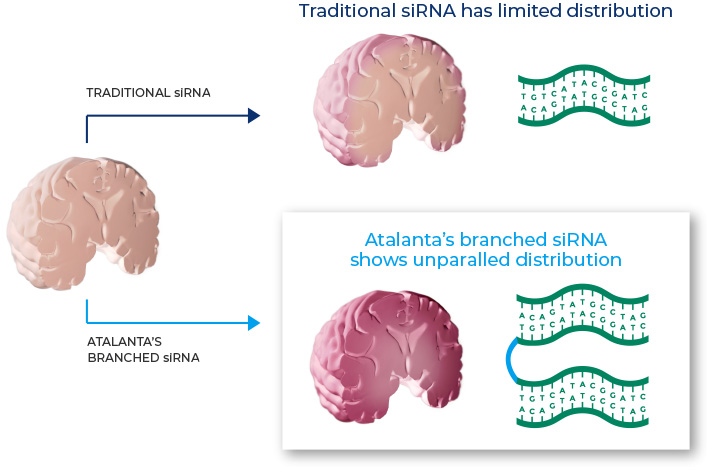RNA interference:
A natural mechanism to regulate genes
Within human cells, genes are constantly being expressed by way of RNA. RNA is the message that conveys genetic directions into action in the body.
RNA interference is a naturally occurring process in cells that can be harnessed for gene silencing therapeutics in the following way.


